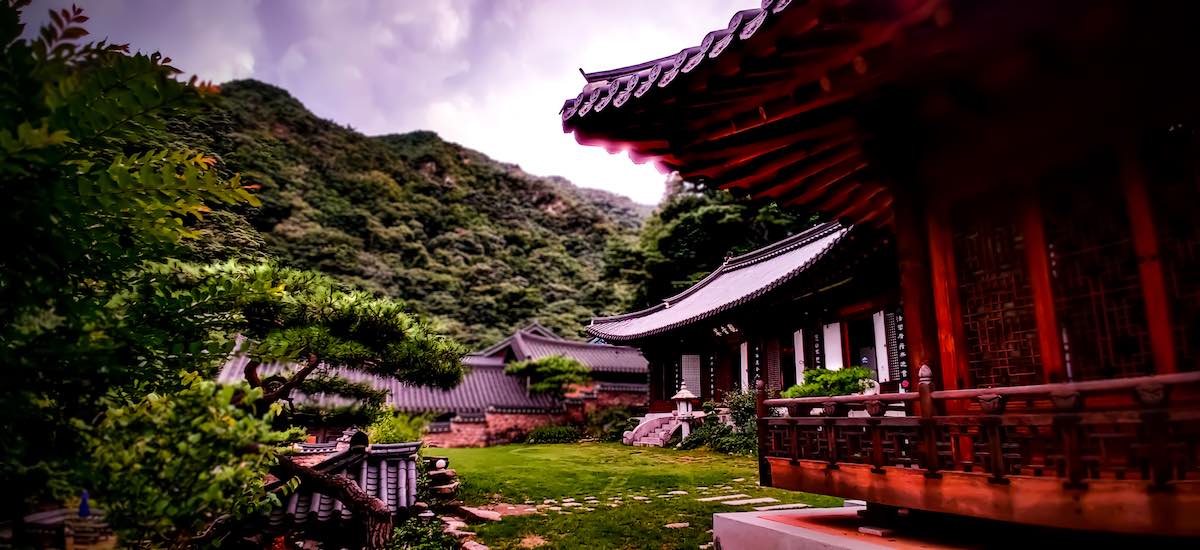Since my PCS to Korea, I’ve traveled extensively throughout this amazing, mountainous country.
As 2021 has come to an end, here are the top 5 places I highly recommend exploring if you find yourself here in 2022.

Image: Kyle Haney
1. Donghwasa Temple — Daegu
I was extremely lucky when I visited Donghwasa as it was a Sunday, and the monks were leading prayer for some 200 people.
The sounds of monks chanting sacred prayers into the wind that was rolling off the green mountainside in the presence of a massive Buddhist statue is something I’ll never forget, and it’s a moment I’ll always be thankful for.

Image: Kyle Haney
2. Gyeryongsan National Park — Gongju-si, Chungcheongnam-do
Gyeryongsan has everything: waterfalls, amazing scenery, peace and quiet, and of course, amazing hiking trails. For this journey, I took a trail that took me 766m into the air with 360-degree views of the picturesque Korean mountains that (figuratively and literally) took my breath away.
In one heading, the skies were cloudless and deep blue while in another direction, a massive thunderhead was building in anticipation of unleashing hundreds of gallons of water some nine or ten kilometers away.
The air was crisp, and the sound of silence was all around me. I paused and soaked the moment in before my weary legs begged me to return to the car.

Image: Kyle Haney
3. Homigot — Pohang
Homigot is Korean for “tiger’s tail cape” and it’s a small point of land that stretches into the East Sea on the east side of Pohang. Judging by how it looks on the map, one could easily argue that it’s the easternmost point of South Korea.
As I parked the car at the Homigot Sunrise Plaza and began reading the posted signs, I learned that the whole cape is loaded with fun activities to do from art sculptures to museums to beaches.
Luckily, I happened to be starting at the Hands Of Harmony art sculpture (aka cool hand thing in the ocean) where I took a good two hours enjoying the art and taking way too many pictures.

Image: Kyle Haney
4. Juwangsan National Park — Gyeongsangbuk-do
Just an hour outside of Pohang, Juwangsan National Park is full of massive canyons that tower over you on both sides as you meander throughout the park.
As I made my way to the Yongchu Pokpo Falls, I discovered the iconic “poster child” of the park on a narrow boardwalk leading me through an impressive water-carved fissure, thousands of years in the making.

Image: Kyle Haney
5. Yeonggeumjeong — Sokcho, Gangwon-do (and Seoraksan National Park)
Not only did I catch a sunrise over the ocean, but I did it in the company of the few Koreans that actually get up before 6:00 am. I was lucky enough to shoot this amazing lead article shot at a temple/gazebo that stretches out towards the east called Yeonggeumjeong. After shooting this, I pointed my compass west and began making my way towards the entrance of Seoraksan National Park.
The steep, and I mean very steep, elevation gain right out of the gate is literally breathtaking. I’d suppose that this is the mountain’s way of gut-checking you as you decide to attempt a summit. Nature must always, always be respected, and I believe that goes for the mountains we climb as well. Had someone showed up unprepared, either physically or mentally, this initial thousand meters was Daechongbong’s way of turning them away.
This place felt like I was standing at the edge of middle earth! The tall, jagged peaks to the north stretched upwards to the sky as they formed a valley that felt as though hell itself was just below me. If I didn’t know any better, I’d say the rocks were actually the spine of some unearthly creature, desperately clawing his way through the earth to get to me. To the south, I could see mountain top after mountain top of the Soeraksan mountains as they orchestrated a uniformed retreat from the sea.
